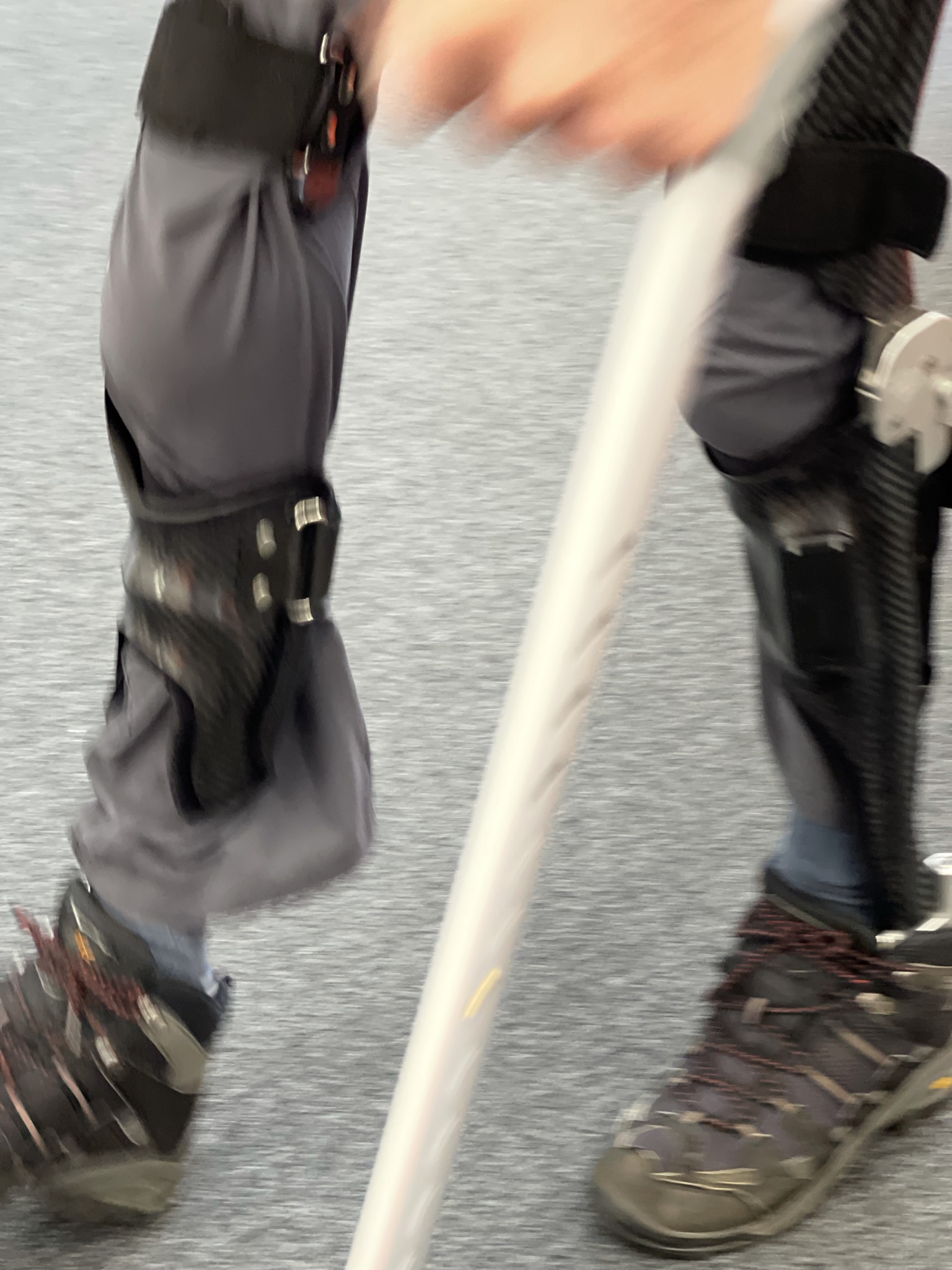Robin Buxton was born in 1950. At the age of one and a half he fell out of bed and his parents gasped “It’s polio”. In those days there was no vaccine (the first polio vaccinations were not introduced until 1955). You can see Robin talking about polio in this short film jointly produced by the BBC and the Royal Society (the film was made at the height of the pandemic to extol the virtues of vaccination): Watch Video on YouTube
For those who did contract polio, there is a 25-50% risk of the individual developing similar muscle weakness or even new muscle weakness and fatigue in later life. This condition is described as post-polio syndrome (PPS) for which there is no specific treatment, and which is likely to progress with age. The symptoms of muscle weakness are routinely treated with orthotics to support the lower limbs.
Robin can trace his PPS back to 2003 when climbing Mt Kilimanjaro for the second time, the first time was in 1999 he had managed to plod on all day, but in 2003 this was no longer possible. For years Robin coped though becoming very dependent on his trusty stick. Over the latter years however Robin was aware that his condition was deteriorating, and falls were also becoming a yearly occurrence, so he decided to see an orthopaedic surgeon at St Thomas’ Hospital. The consultant told him: ‘Frankly NHS orthotics will not be able to cope with the degree of contracture in your knees but a private specialist orthotic clinic like LOC may be able to help’, which is how Robin came to see Sam Walmsley, director and lead clinician of LOC, in 2019.
10 November 2022
Sam did find Robin’s gait to be very complex, he was affected bilaterally but his r/h side was worse than his left, though he had a drop foot in his left foot. Over the years Robin had learnt to cope with his condition by controlling his r/h knee with his right hand while using a stick for balance in his left hand. Sam’s solution was to prescribe a stance control Neurotronic KAFO for his worst affected leg (his right) to provide as much stability as possible, with a stretching KAFO on his left to improve the range of movement of that knee. As Robin says: “For an orthotist, Sam is a hell of an engineer!!”
The most immediate benefit Robin enjoyed from his new orthotics was that he was able to stand comfortably for long periods of time: “it was actually something I had just stopped doing, I always had to sit down, not great if you are in company with people looming over you to talk to you”.
Robin is in very active retirement, looking after an 80-acre farm which is intended to be for cattle. Currently, he spends most of his time on his hands and knees (not wearing his KAFOS) as he is trying to improve the quality of the soil on his land naturally without the use of unnecessary fertilizers. He does so reassured that when the time comes, he will be able to rely on the orthotics prescribed and manufactured by LOC to keep him standing and walking in comfort.
If you suffer from mobility issues due to Polio or PPS, modern bespoke orthotics can make a real difference. For more information, please contact us

An AFO is an Ankle Foot Orthosis which as the name would suggest encompasses the ankle and foot. The objective is to control the position and movement of the ankle. AFOs are used to support weak limbs; they can also be used to immobilise the ankle and lower leg to correct foot drop. When set up correctly they can also have a great influence on the knee and hip joints. They are the most commonly used Orthoses.
The length of time that one needs to wear an AFO very much depends on the condition being treated. If it is a long-term condition like cerebral palsy or post-polio syndrome it is likely to be years as the condition cannot be cured. Your orthotist will advise you.
A patient’s comfort in their AFO is vital for compliance with the prescribed wearing regime.
So there are a number of steps the orthotist should take to ensure a comfortable fit: the patient’s heel should fit fully into the heel cup without excess space, the contours of the plantar surface of the AFO should match the patient’s foot, for children there needs to be up to half an inch growth room in the toe shelf length. At LOC we use our Gait Laboratories at our Kingston and Manchester clinics to fine-tune our bespoke orthotics.
A GRAFO is used to control instabilities in the lower limb by maintaining proper alignment of limbs and controlling their motion. It reaches around to the front of the knee extending down to the ankle. It works by altering a patient’s limb presentation to displace load and impact as well as offering further control to the knee.
The most flexible type of AFO is a Dynamic Ankle Foot Orthosis (DAFO). It is thin and provides flexible support to the foot and ankle.
We have the following facilities and amenities at our Kingston Upon Thames location:
We also have the Gait Laboratory for orthotics patients and Onsite Manufacturing for speedy turnarounds and adjustments whilst you wait.